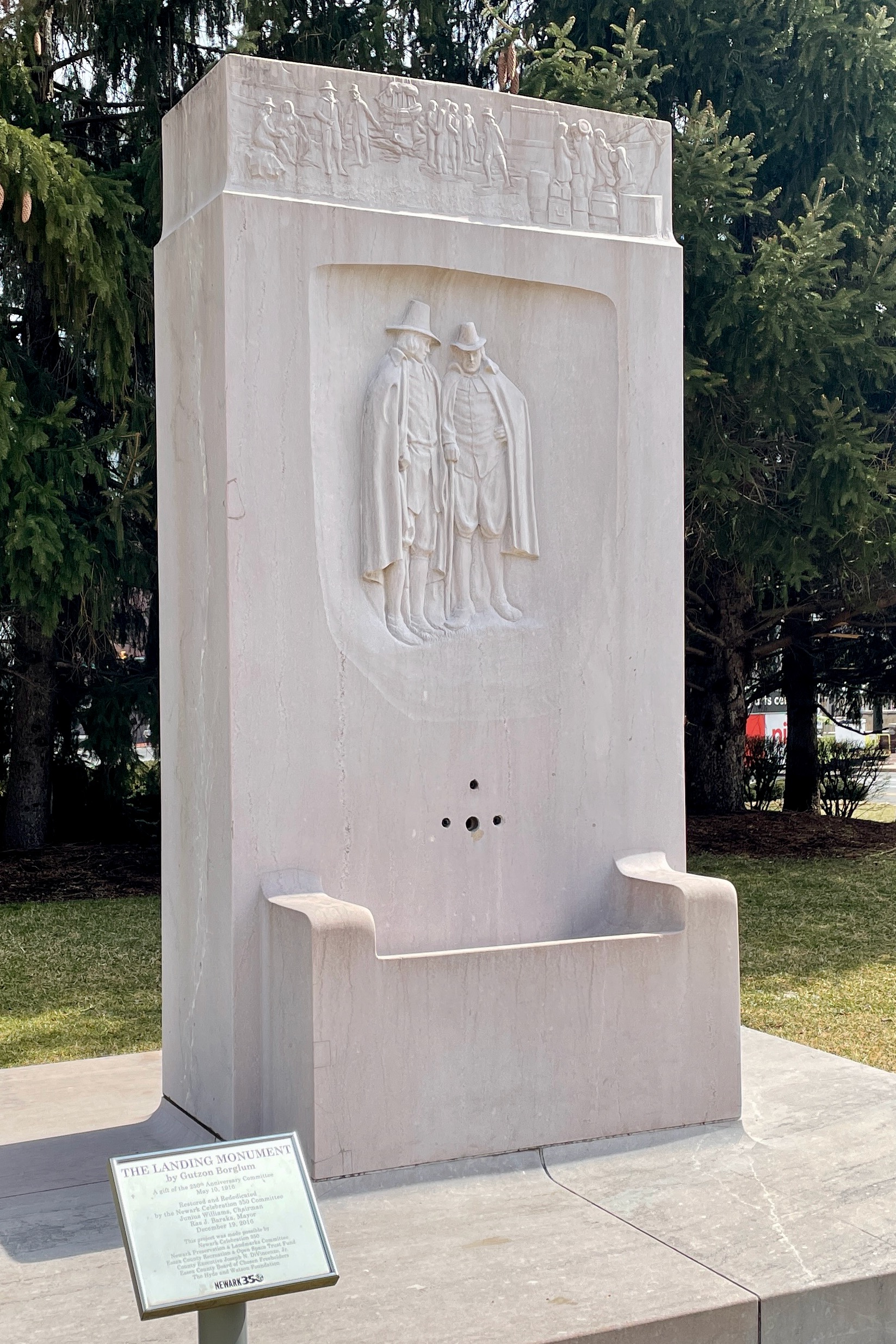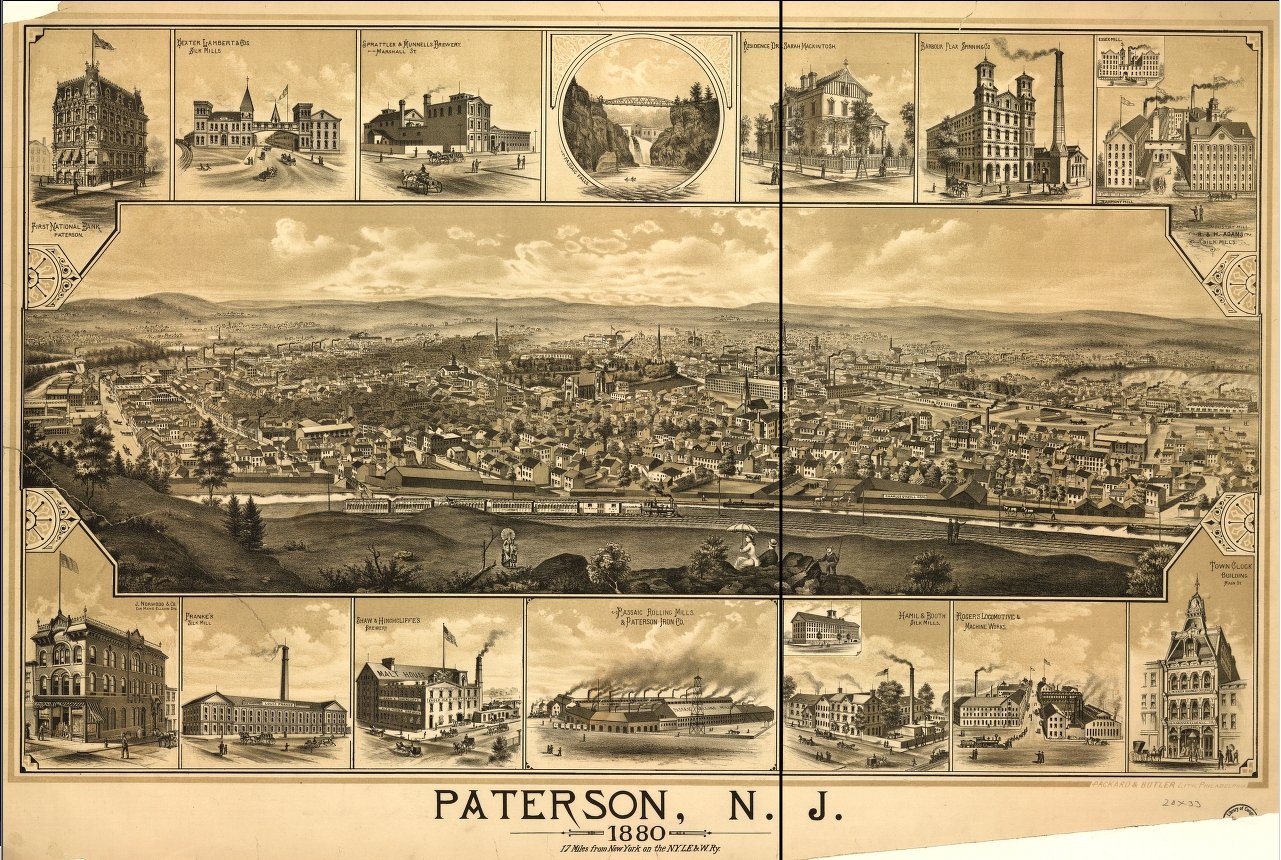|
Horseneck Tract
The Horseneck Tract was an area in present-day Essex County, New Jersey, United States, that consisted of what are now the municipalities of Caldwell, West Caldwell, North Caldwell, Fairfield, Verona, Cedar Grove, Essex Fells, Roseland, and portions of Livingston and West Orange. History On May 1, 1701, Dutch Settlers Simon Van Ness, Gerebrand Clawson, Hans Spier, Elias Franson, Christopher Steinmets, Andrese Louwrentz, Garret Vanderhoof, Hessell Pieters and Jan Spier bought from the Indians a large tract of land at Horseneck.N.J. Secretary of State, Deeds, Surveys, and Commissions. Symon Vanness, et al. from Indians Deed Book O, p. 149+ Date: 5-1-1701 - Essex County This acreage could not be determined because all of the boundaries were Indian named points and places. The first accurate surveys began to be recorded 12 years later. In 1702, English settlers purchased another 14,000 acre (57 km2) section of the Horseneck Tract from the Lenape Native Americans for goo ... [...More Info...] [...Related Items...] OR: [Wikipedia] [Google] [Baidu] |
Essex County, New Jersey
Essex County is located in the northeastern part of New Jersey. As of the 2020 U.S. census, the county's population was 863,728, making it the state's second-most populous county, behind Bergen and Middlesex Counties.Annual and Cumulative Estimates of Resident Population Change for Counties in New Jersey and County Rankings: April 1, 2020 to July 1, 2021 . Accessed June 1, 2022. Its |
Native Americans Of The United States
Native Americans, also known as American Indians, First Americans, Indigenous Americans, and other terms, are the Indigenous peoples of the mainland United States (Indigenous peoples of Hawaii, Alaska and territories of the United States are generally known by other terms). There are 574 federally recognized tribes living within the US, about half of which are associated with Indian reservations. As defined by the United States Census, "Native Americans" are Indigenous tribes that are originally from the contiguous United States, along with Alaska Natives. Indigenous peoples of the United States who are not listed as American Indian or Alaska Native include Native Hawaiians, Samoan Americans, and the Chamorro people. The US Census groups these peoples as " Native Hawaiian and other Pacific Islanders". European colonization of the Americas, which began in 1492, resulted in a precipitous decline in Native American population because of new diseases, wars, ethnic cleansin ... [...More Info...] [...Related Items...] OR: [Wikipedia] [Google] [Baidu] |
West Essex
West Essex is the far northwestern region of Essex County, New Jersey, United States, bordering Passaic County and Morris County. It is considered to be one of the more affluent parts of the county, as opposed to the eastern Essex cities such as Newark, East Orange, and Irvington. As opposed to these city settings, West Essex are more suburban. Most of the municipalities have typically been white ethnically, where Newark and its bordering cities all have black majorities. West Essex also has substantial Hispanic and Asian populations. Places that separate Newark and East Orange from the West Essex area, such as South Orange, Maplewood, West Orange, Bloomfield, and Montclair have a balance of black and white people, and of different classes. Municipalities Caldwell, West Caldwell, Roseland, Essex Fells, North Caldwell, and Fairfield share much history and culture having belonged to the Horseneck Tract. The Caldwell and West Caldwell share a public school system wi ... [...More Info...] [...Related Items...] OR: [Wikipedia] [Google] [Baidu] |
Newark Tract
Newark has long been the largest city in New Jersey. Founded in 1666, it greatly expanded during the Industrial Revolution, becoming the commercial and cultural hub of the region. Its population grew with various waves of migration in the mid 19th century, peaking in 1950. It suffered greatly during the era of urban decline and suburbanization in the late 20th century. Since the millennium it has benefited from interest and re-investment in America's cities, recording population growth in the 2010 and 2020 censuses. Founding and 18th century Newark was founded in 1666 by Connecticut Puritans led by Robert Treat from the New Haven Colony to avoid losing political power to others not of their own church after the union of the Connecticut and New Haven colonies. It was the third settlement founded in New Jersey, after Bergen, New Netherland (later dissolved into Hudson County, then incorporated into Jersey City) and Elizabethtown (modern-day Elizabeth). They sought to establish a ... [...More Info...] [...Related Items...] OR: [Wikipedia] [Google] [Baidu] |
New Barbadoes Neck
New Barbadoes Neck is the name given in the colonial era for the peninsula in northeastern New Jersey, US between the lower Hackensack and Passaic Rivers, in what is now western Hudson County and southern Bergen County. The neck begins in the south at Kearny Point in the Newark Bay and is characterized by a ridge (creating the valley of the Passaic) along the west and part of the New Jersey Meadowlands (the flood plain of the Hackensack) on the east. Native Americans and Netherlanders The neck was part of an area called Meghgectecock by the Lenape. It was the territory of the group called the Hackensack. The name of ''masgichteu-cunk'' meaning ''where May-apples grow'', from a moist-woodland perennial that bears edible yellow berries. The name Achter Col was given during the New Netherland era in the mid-17th century, and can be translated a ''rear mountain pass'' or ''behind the ridge'', in reference to the access it provided to the hinterlands beyond the Hudson Palisades ... [...More Info...] [...Related Items...] OR: [Wikipedia] [Google] [Baidu] |
Monmouth Tract
The Monmouth Tract, also known as the Monmouth Patent, Navesink Tract or Navesink Patent was a large triangular tract of land granted as a land patent to settlers of New Jersey during the early American colonial period. History Colonel Richard Nicolls, an English military officer, had conquered the territory that is now the states of New Jersey and New York when he forced the Dutch surrender of the New Netherland colony at the onset of the Second Anglo-Dutch War in 1664. Nicolls had instructions to govern the colony, and after establishing English rule, he instituted a legal system centered on English common law, and issued conditions upon which plantations and land grants would be created. After granting patent for Elizabeth-Town (''Achter Koll'' on Newark Bay) in 1664, Nicolls granted patents for a triangular tract of land called the Monmouth Tract also called the Navesink Tract on April 8, 1665. Twelve men, most of whom were Quakers from Long Island, purchased a tract that ex ... [...More Info...] [...Related Items...] OR: [Wikipedia] [Google] [Baidu] |
English Neighborhood
The English Neighborhood was the colonial-era name for the towns in eastern Bergen County, New Jersey, along the Hudson Palisades between the North River (Hudson River), Hudson River and the Hackensack River, particularly around its main tributary, Overpeck Creek. The region had been part of the Netherlands, Dutch New Netherland colony of Bergen, New Netherland, Bergen, whose main town was located at Bergen Square in today's Jersey City, New Jersey, Jersey City. The name speaks to the geography of the region, ''bergen'' being the Dutch word for ''hills.'' Earlier attempts at settlement at Achter Col (''behind the ridge'') and Vriessendael had been compromised in conflicts with the precolonial population, bands of the Lenape known by their exonyms, the Hackensack (Native Americans), Hackensack and the Tappan (Native Americans), Tappan. History After the surrender of Fort Amsterdam at the tip of Manhattan and annexation of the entire Dutch province by the British in 1664, Gateway Reg ... [...More Info...] [...Related Items...] OR: [Wikipedia] [Google] [Baidu] |
Elizabethtown Tract
The Elizabethtown Tract was a property that was purchased on October 28, 1664, by John Baily, Daniel Denton and Luke Watson from the Native Americans that is in the area of (and surrounding) present-day Elizabeth, New Jersey. The Native American witnesses to the treaty gave their names as Warinanco and Mattano. As specified in the Deed, the purchase included the area "Bounded on the South by a River commonly called the Raritons River, and on the East by the River which Parts Staten-Island and the Main, and to run Northward up after Cull-Bay, till we come at the first River which sets Westwards up after Cull-Bay." The territory encompassed lands from the mouth of the Raritan River and included all of present-day Union County as well as parts of Somerset, Middlesex, Morris and Essex counties. Shortly after the purchase, Denton explored the area in and surrounding his purchase. In 1670, Denton wrote the first English-language description of the area. See also * Province of East ... [...More Info...] [...Related Items...] OR: [Wikipedia] [Google] [Baidu] |
Paterson, New Jersey
Paterson ( ) is the largest City (New Jersey), city in and the county seat of Passaic County, New Jersey, Passaic County, in the U.S. state of New Jersey.New Jersey County Map New Jersey Department of State. Accessed July 10, 2017. As of the 2020 United States census, its population was 159,732, rendering it New Jersey's List of municipalities in New Jersey, third-most-populous city. The United States Census Bureau, Census Bureau's Population Estimates Program calculated that the city's population was 157,794 in 2021, ranking the city as the List of United States cities by population, 163rd-most-populous in the country. Paterson is known as the Silk City for its dominant role in silk production during the latter half of the 19th century.Thoma ... [...More Info...] [...Related Items...] OR: [Wikipedia] [Google] [Baidu] |
Newark, New Jersey
Newark ( , ) is the most populous city in the U.S. state of New Jersey and the seat of Essex County and the second largest city within the New York metropolitan area.New Jersey County Map New Jersey Department of State. Accessed July 10, 2017. The city had a population of 311,549 as of the , and was calculated at 307,220 by the Population Estimates Program for 2021, making it [...More Info...] [...Related Items...] OR: [Wikipedia] [Google] [Baidu] |
James Caldwell (clergyman)
James Caldwell (April 1734 – November 24, 1781) was a Presbyterian minister who played a prominent part in the American Revolution. Biography Caldwell was born in Cub Creek in Charlotte County, Province of Virginia, the seventh son of John and Margaret Caldwell, who were Scots-Irish settlers, and traced their ancestry to Huguenots who fled France to Scotland in the 16th century, established Caldwell Castle and later defended the Ulster Plantation and Derry. James Caldwell graduated from the College of New Jersey (later called Princeton University) in 1759 and, although he inherited in Cub Creek, chose to become pastor of the Presbyterian Church in Elizabethtown, New Jersey. He was an active partisan on the side of the Patriots, and was known as the "Fighting Parson". His church and his house were burned by Loyalists in 1780. While Caldwell was stationed with the army in Morristown, his wife Hannah was killed by British gunfire under disputed circumstances during the Batt ... [...More Info...] [...Related Items...] OR: [Wikipedia] [Google] [Baidu] |
Passaic River
Passaic River ( ) is a river, approximately long, in Northern New Jersey. The river in its upper course flows in a highly circuitous route, meandering through the swamp lowlands between the ridge hills of rural and suburban northern New Jersey, called the Great Swamp, draining much of the northern portion of the state through its tributaries. In its lower portion, it flows through the most urbanized and industrialized areas of the state, including along downtown Newark. The lower river suffered from severe pollution and industrial abandonment in the 20th century. In April 2014, the U.S. Environmental Protection Agency (EPA) announced a $1.7 billion plan to remove of toxic mud from the bottom of lower of the river. It is considered one of the most polluted stretches of water in the nation and the project one of the largest clean-ups ever undertaken. Course The Passaic rises in the center of Mendham, in southern Morris County. The river begins at Dubourg Pond located between Sp ... [...More Info...] [...Related Items...] OR: [Wikipedia] [Google] [Baidu] |






